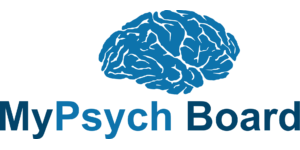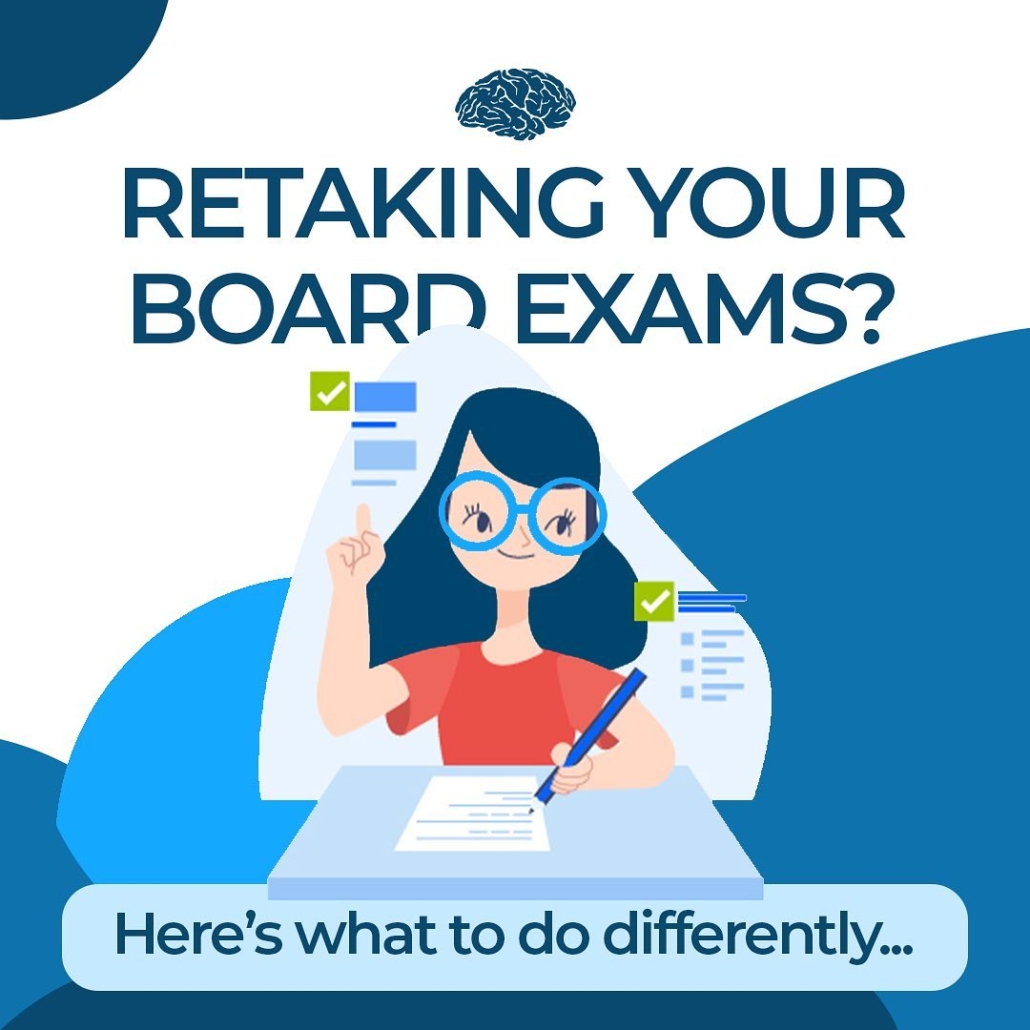The time has finally come… you’re locked in, ready to go, and you’re going to ace your retake exam. Why? Because you’ve followed our TOP 5 tips that ensure your success in passing your Psychiatric Board Exam with ease!
1 – Analyze Your Weak Points
If you know where you struggled with most in the last board exam you can hone in on intaking as much information as you can retain. These don’t need to just be areas you did pool on previously, but could also be ones that could be further reinforced. Try out My Psych Board’s customizable tests that zero in on your most missed questions!
2 – Focus On The NOW
The past is the past, there’s no point in going back! The only way to move in a positive direction is forward. Learn from your mistakes and how you can apply what you’ve learned for better-guaranteed results. If you stay focused on past failure it’s only going to bring negativity and additional stress to your study sessions.
3 – Create A Plan
When studying it’s essential to make the most of your time. Create a plan tailored to your needs. Before you can even begin studying you need to make sure you have all the resources you need. Organize items into folders, check you have all the materials you need, and tidy up your study spot.
4 – Utilize Detailed Questions Banks (like ours here)
With detailed Q-Banks, you’ll get the blueprints, questions, detailed information, vignettes, and more! Within the question breaks, you can get real-time feedback on correct answers, and learn where you’ll need to continue to improve.
BONUS TIP: Did you know we offer FREE Trials of all of our Question Banks? Click here to try today (with no credit card required…)
5 – Take Regular Breaks
As with anything don’t overdo it, You need to ensure you aren’t pushing yourself too far! When you’re studying and preparing for the exam you’re taking a mental health break. This will help break up your studying time, keep you from feeling overwhelmed, and ensure you’re retaining all the information you’re taking in.
Still, feeling uneasy? Contact us and we can help YOU pass your boards with ease!




Syndrome Series: Schizoid vs. Schizotypal Personality
/in General, Health and WellnessWhat is Schizoid Personality
Schizoid personality is a cluster A personality disorder found in the DSM-V. Individuals with this disorder are not “almost schizophrenic” as the name may imply. Instead, these are unique individuals that show detachment from socials relationship and severe restriction in range of emotional expression. The DSM classifies it as showing at least four of the following: neither desire or enjoyment of close relationships (including being a part of a family), almost always choosing solitary activities, having little if any interest in sexual experiences with other people, experiencing little pleasure from any activities, lacking close friends or confidants, showing indifference to praise or criticism, and showing emotional coldness, detachment or flattened affectivity.
This pattern of behavior usually emerges in early adulthood. To others, these individuals seem to lack a desire of any form of intimacy or social connectedness. It is not a common condition, with a prevalence rate of 3.1- 4.9% in the U.S. population.
Schizoid vs. Schizotypal Personality
Schizotypal personality is also a cluster A personality disorder. Although the names are similar, there are several key distinctions between Schizoid and Schizotypal personality. While they both have few, if any, close friends or confidants and show constricted affect, the root of these similar attributes is different. Schizotypal personality is associated with a lack of capacity and severe discomfort with close relationships; Schizoid personality is associated with a total lack of interest and indifference to others.
Schizotypal individuals show interpersonal deficits as well as cognitive or perceptual distortions. The DSM requires that these individuals also display at least five of the following: ideas of reference, odd beliefs or magical thinking (i.e., belief in telepathy or clairvoyance, bizarre fantasies), bodily illusions or unusual perceptual experiences, odd thinking and speech (i.e., vague, circumstantial, metaphorical), odd or eccentric behavior, and excessive social anxiety associated with paranoid or suspicious ideation.
Similar to Schizoid, this pattern of behavior also emerges in early adulthood. While Schizoid personality appears detached and cold to others, Schizotypal personality appears as eccentric or odd, and as having apparent discomfort with close relationships. The prevalence rate is similar to Schizoid personality at just under 4% of the U.S. population.
First Line Treatments
Treatment options for either of these disorders generally includes psychotherapy as the primary tool. Some pharmaceutical options may be used as well, but there is no current specific medication used for either disorders.
Psychotherapy
Pharmaceuticals
There are no current, FDA approved medications for either of these personality disorders. However, some medications may be used in combination with psychotherapy to alleviate symptoms to benefit the patient, such as antidepressants or antianxiety medications.
Ready to learn more?
Give our question banks a try- FREE- using our Free Trial! Or if you’re ready to take the plunge, check out our Question Banks and find the perfect fit for you! Or, contact us with any questions you have so we can get you on the right path today!
REFERENCES:
American Psychiatric Association. (2022). Diagnostic and statistical manual of mental disorders (5th ed., text rev.). https://doi.org/10.1176/appi.books.9780890425787
Mayo Clinic: https://www.mayoclinic.org/diseases-conditions/schizotypal-personality-disorder/diagnosis-treatment/drc-20353924#:~:text=Treatment%20for%20schizotypal%20personality%20disorder,fit%20for%20their%20personality%20styles.
Cleveland Clinic: https://my.clevelandclinic.org/health/diseases/23030-schizoid-personality-disorder
Time to go back to the ABC’s
/in Board Prep, StudyingYes, we know you know your ABC’s 🙂 But, sometimes it helps to reinvent the old classics to help us in the here and now. We’ve compiled a quick list of test taking tips that might help you as you prepare for your exams ( using A-E, because those are the letters you’ll see on the exams and maybe that will help keep these in mind!).
The ABC’s of Test Taking
A Apply basic knowledge
This is the old adage, if you hear hoof beats, don’t assume it’s zebras. When you get your first look at a test question, whether it’s a standard multiple choice or a multiset vignette, the first thing to do is to look for the obvious. Most questions will be testing your basic knowledge and will give you clear signs that point to an answer. Some will be trickier of course, but a good rule of thumb is to dust off Occam’s razor and keep it in mind as you go through the questions. Keep your basic knowledge front and center!
B Block out distractors
Test makers are devious. There, I said it. They intentionally create distractor answers that will try to trick you (so rude). Falling back on the letter A, keep your basic knowledge in mind and then block out the answers you see off the bat as incorrect. For example, you might be reading a question about someone who is lethargic, has a lack of appetite, low mood, and disrupted sleep. Answer options could be Bipolar I, General Anxiety, Depression, PMDD, or Substance Withdrawal. Now, some of these conditions do in fact share the listed symptoms. But there’s missing information that would be required to make those answers the BEST answer.
Bipolar I would require symptoms of mania; GAD has other hallmark symptoms such as feelings of dread/worry that they cannot control; PMDD is cyclical around menstrual cycles in females; substance withdrawal requires mention of something that would cause the withdrawal. The distractors are there to make you second guess, so if one pops out as the best one, chances are it probably is!
C Check the question stem again
Well, maybe the distractors did a good job and now you can’t get passed it. Go back and find the question stem again. What is the question asking? Does it give the information you would NEED to make the other answer fit, or are you banging a square peg into a round hole? While the test makers are tricky, they aren’t totally evil. They will give you all the information you need with minimal need to fill in the blanks.
D Don’t over think it!
Ok, we got through the distractors and now we have our answer, Depression! Makes sense, fits the symptoms…wait, doesn’t it need a time frame to make a diagnosis? What if it’s none of these answers and actually something like Dysthymia? Or– stop. Stop over thinking it. Again, this is the job of the distractors to make you start thinking in circles. If the answer fits the information given in the best way, move on to the next question.
E Every little bit helps
You get about one minute per question on the exams, so you want to crank out as many answers as possible. And, most exams don’t “penalize” wrong answers, they just add up your correct ones. Leaving answers blanks and guessing and getting it wrong will do the same thing to your score. But, guessing might also get you one right! So if you need to stab a guess at one, DO IT because there’s a chance you could get it right!
Want to give this method a shot? Try our Free Trial and see how well it pans out. We’d love to hear from you, and you can Contact us with any questions you have or to let us know if these tips helped you or not!
The Going Rate: PRITE Passing Scores
/in Board Prep, StudyingIf you’ve bee following us, you may have noticed we’ve been running a series on Going Rates of the Industry. So far we’ve covered the passing rates for the ABPN and USMLE exams, as well as the rates and scores for the PMHNP exam. Today we’re going to delve into the PRITE!
There isn’t a “Passing Rate” for the PRITE to speak of, because in order to continue on in school you HAVE to pass the PRITE. This makes it a little different than the other exams.
PRITE Overview
The PRITE (which stands for Psychiatry Resident In Training Examination) is administered in 2 parts over 2 days. Residents average out to taking the exam 3 or 4 times over the course of their training! This may seem strange, but we also know that repetition is a great form of learning so really it makes sense.
How many questions are on the PRITE?
300 questions make up the exam. It’s a hefty one!
What topics are covered?
Quite a few. Thirteen sections, plus their subsections.
When can you take the exam?
The exam is administered yearly from September 24- October 15. This date range doesn’t change, so you can always know when it’s coming up.
What score do you need to pass?
Like any standard test, a 70% is passing. Chances are you’ll probably score higher than that, though!
How should you prepare?
One way to prep is to NOT use old exams. What, why not? We have a whole blog on this subject that can be found here! Ok, so how DO you prep? Some people jump in cold turkey without any studying (not recommended, but hey, you do you, boo boo). Or, try out some Question Banks which give you real-time practice answering questions that will be like the ones on the exam, full of rich details, and also covering all the above mentioned topics!
We’re ready to help you prep for this test that you can’t avoid. Go ahead and contact us with any questions you have!
W
w
H